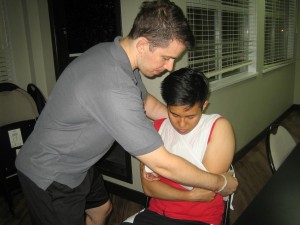Hawaii is not only an amazing vacation destination, it is also home to one of the best CPR training providers in the US. Our programs at Honolulu CPR are the best you will find in the state, with different schedules through the week at very affordable rates. Learning CPR has never been this easy; simply sign up in person, over the telephone, through e-mail, or (a more popular choice among the younger generation) via the application form on the Honolulu CPR website.
What causes a heart attack?

A heart attack happens when there is a sudden halt in the flow of blood to the heart. This is usually manifested as severe chest pain that cannot be alleviated with rest or prescribed medication. The pain may be sudden, after a stressful or strenuous activity, or it can be preceded by mild chest pain after similar activity of a period of time. Heart attacks are dangerous because they can lead to cardiac arrest – wherein the heart stops beating completely.
The biggest factor to consider about cardiac arrest is a pre-existing heart disease. Coronary artery disease is the most common heart disease in the US, affecting more than 13 million Americans. According to the CDC and WHO, it is the number one killer of American men and women; with more than half of its annual victims being women.
Other factors contribute to cardiac arrest and CAD, primarily hypertension and an unhealthy lifestyle. The latter is actually the biggest risk factor for developing high blood pressure and CAD. When you have a diet high in fat and sodium, plus a sedentary lifestyle, you are at risk in getting a heart disease.
What can you do when somebody suddenly has one?
CPR is the choice (immediate) management for heart attacks, in and out of the hospital. If you are trained in CPR or at least know how to give chest compressions, check for breathing and a pulse before you start. A victim of cardiac arrest with have an erratic or absent pulse with or without regular breathing. Once you have called for help, immediately start CPR.
In depth into CPR
CPR has three core skills: compression, ventilation, and defibrillation. In all our programs, these basics are covered.
- Compression refers to chest compressions, wherein the chest is pushed down to get the heart beating. In adults, the compression depth should be at least 2 inches; in infants and toddlers, the depth should be at 1.5 inches.
- Ventilations can be given in two ways: mouth-to-mouth or using a bag valve mask. Ideally, a barrier device should be used if mouth-to-mouth rescue breaths are being used.
- Defibrillation is a skill that we include in the basic program, though AEDs are typically only used by EMTs. AEDs are used to send electricity to the heart to try and get it to beat spontaneously.
